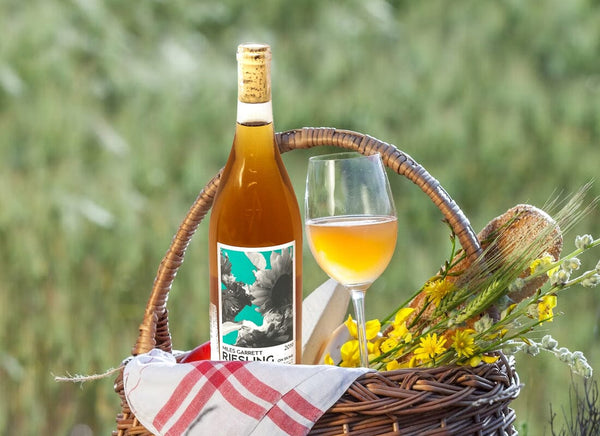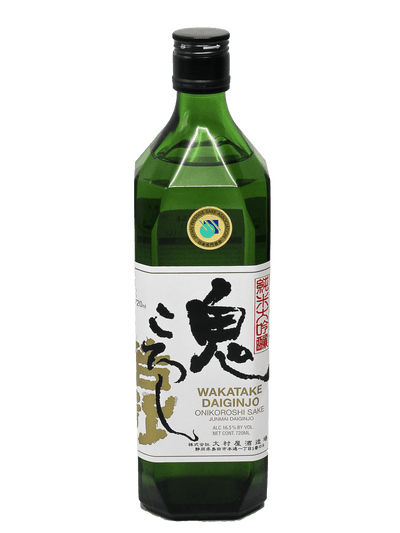Everything You Need to Know about Orange Wine

The Orange Wines have come to stay. Some people even venture to assert that “orange wine is the new rosé.” That would be hard to conceive of, but these special wines certainly have their niche and plenty of buzz generated around them. Their often associated with the natural wine movement, and your favorite wine store California currently has nine wines available categorized as “Orange,” though it may not say so on the label. Have you tried Orange Wine? Let’s learn about them.
Are Orange Wines Always Orange?
Are Orange Wines those made from Orange Muscat? No, it doesn’t have to do with the grape variety, though they are made from “white” grapes. First, Orange Wine refers to winemaking techniques, not necessarily color of the resulting wine. The Oxford Companion to Wine tells us that Orange Wine is a “white-grape wine style.” Unlike conventional white wine vinification, however, these wines are left in contact with the grape skins (and seeds) from short (about a week) to very long (about a year) periods of time. Because of that, the wines darken and produce a color along the “yellow/amber/gold/orange/pink spectrum.”
Some Orange Wines do feature a distinctive orange color, which can approach honey gold or amber. They make great wines for a Halloween party!
Although these wines are technically white wines, their production method does not follow the typical vinification of a white wine, where the grapes are pressed and fermented with very little contact time with the skins.
Maceration with the grape skins, stems, and pips allows aromatic precursors to be released, the must to have a higher concentration of tannins and more moderate acidity (the potassium in the stem causes tartaric acid to precipitate). This gives these wines very particular flavor, mouthfeel, and aroma properties. Just think of a chewy, tannic white wine.
In some cases they are matured in ceramic or baked clay amphorae, that is, back to ancient tradition! The use of added sulfur or cryogenic (cold) treatments is not common for orange wines and therefore they are wines that ferment spontaneously with using wild yeasts, but again this is not a requirement. It does, however, make them a common entrant among Natural Wines.
What Are Orange Wines Like?
When you order wine online, you will see they are often wines that at sight are amber and often cloudy because they do not undergo any filtration or clarification process in keeping with the Natural Wine trend. Aromatically, they are intense in perfumes, these being the most common: ripe fruit, pine resin, wild herbs, white flowers, sweet spices, nuts, and dry grass.
Food & Wine Pairings
On the palate they are very tasty, and can have saline notes, earthy, austere, and dense: not what you usually think of for “white” wines. They are trending wines within the section of natural wines and they go well with stews and hearty cheeses. Wine Folly recommends Moroccan cuisine, Ethiopian cuisine (especially those spongelike pancakes called Injera), and Korean dishes featuring kimchi.
When was the Name Created?
The name “Orange wines” was coined in 2004 by the English wine distributor David Harvey, who preferred to work with small producers, avoiding the most commercial offerings of “Big Wine.” Among winemakers, Josko Gravner in Friuli started the trend by making only orange and red wines starting in 1998, though he called them amber wines. Combined, Harvey and Gravner created a trend.
Why are Orange Wines Associated with Natural Wine?
Projects that claim a recovery of the traditional techniques, a return to winemaking’s origins and to the oldest ways of making wine, considering them more sustainable and less environmentally invasive, are becoming more and more popular. In this way, many people believe that more “authentic” and expressive white wines are obtained.
As mentioned above, orange wines are made with ancestral elements, such as tinajas, qvevri, jars, or amphorae, as opposed to the stainless steel fermenters that are widely used today. That’s a choice left up to the winemaker, however.
History of Orange Wine
These types of ancient wines underwent a renaissance during this century at the hands of the famous viticulturist Josko Gravner, with his winery in Friuli, in northern Italy. Determined to dispense with increasingly interventionist winemaking methods, Gravner began experimenting with natural ways of vinifying his wines, using ancient elements, resulting in orange or amber wines, as he prefers to call them. We should not forget, though, that many modern white wines are made using long periods of skin contact, including white ports, Tokaji, and many modern wines from Georgia.
The elaboration of wines using amphorae is very historic, since its use has been encountered by archaeologists more than 5,000 to 6,000 years ago in Georgia, although in a much more rudimentary way and without the use of yeasts.
Five Orange Wines to Try When You Buy Wine Online from Bottle Barn
- From Portugal, the 2021 Casa Relvas Art.Terra Curtimenta
- From Spain, the 2021 Gulp Hablo Orange in a 1 liter bottle
- From Alsace in France, the 2020 Rietsch Coquette
- From California, the 2019 Miles Garrett On Skins Riesling
- And from Oregon, the 2021 James Rahn Weber Vineyard Pinot Gris
We hope you enjoyed learning about the Orange Wine trend from the best wine store California! Read more articles on wine and spirits to stay up to date!


















Leave a comment